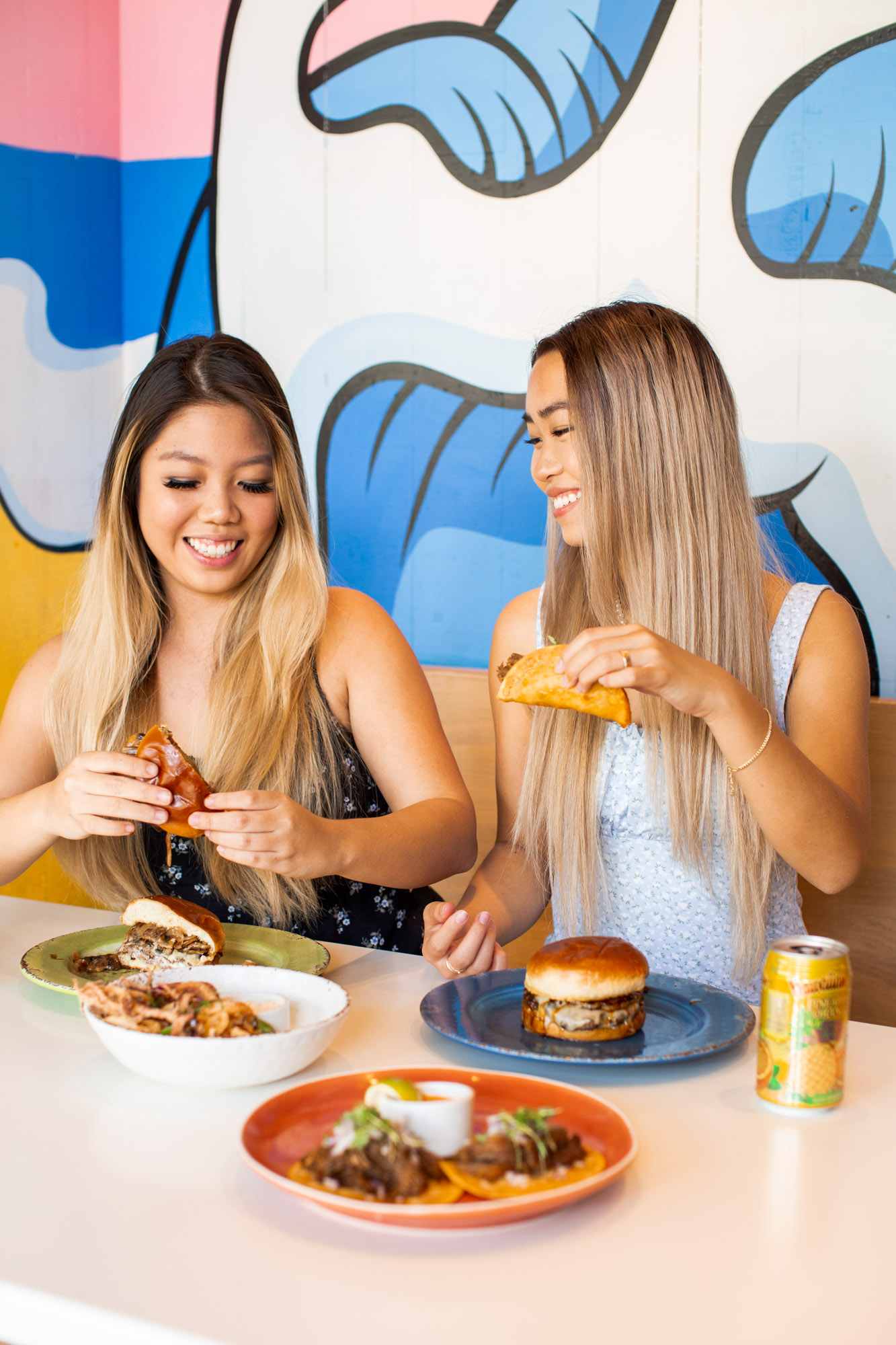
The Origins of Lei Day and Aloha Friday

Lei Day and Aloha Friday, two local days of celebration, showcase Hawai‘i’s fondness for adornment and spirited cultural expression.
✏️ LINDSEY KESEL
📸 ANDREW TRAN, SURF LINE HAWAII & ALFREDSHAHEEN.COM
レイデーとアロハフライデーは、地元の人々が愛す
るレイと生き生きとしたハワイ文化を讃える日です.
“May Day is Lei Day in Hawai‘i,
Garlands of flowers everywhere.”
—“May Day is Lei Day in Hawai‘i,” 1928, written by Ruth and Leonard “Red” Hawk
Visitors who happen to be in Hawai‘i on the first day of May quickly learn that May Day, known locally as Lei Day, is something of a big deal here. Though May Day, which traditionally honors the start of spring, is not as widely recognized in the continental U.S. as it was in the past, Lei Dayhas endured as a way to commemorate the deeply meaningful traditions of lei-making and lei-giving in the Hawaiian Islands. In ancient Hawai‘i, lei were made by skilled artisans who took great care in gathering ‘ilima blossoms, ti leaves, feathers, seeds, and other materials specially chosen for their sacredness, scent, color, and healing properties. Whether bestowed for adornment, akua (god) worship, social distinction, or as an expression of aloha, the lei-maker passed his or her mana (spirit) on to the lei-wearer.
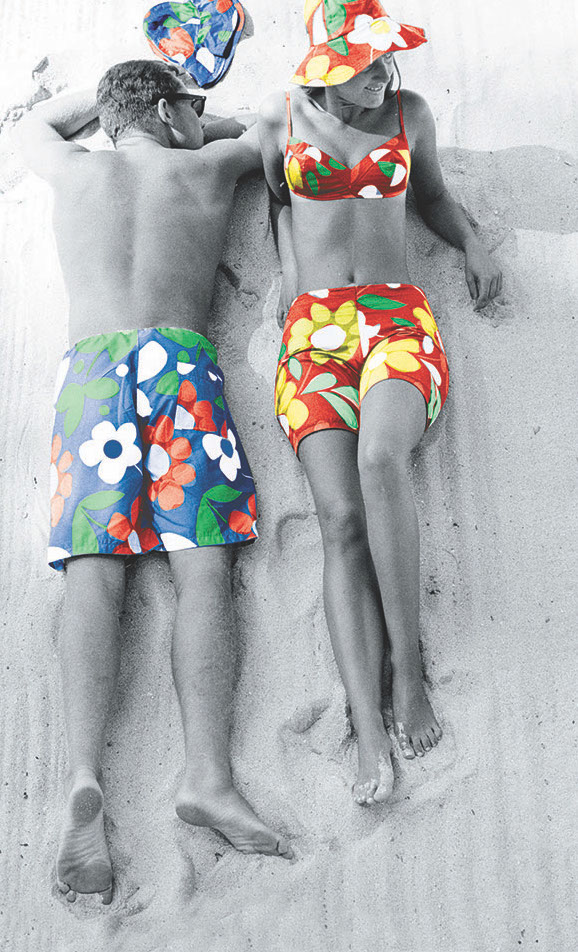
HERITAGE BRAND SURF LINE HAWAII HELPED BRING ALOHA PRINTS TO THE MAINSTREAM WITH ITS COLORFUL DESIGNS INSPIRED BY 1960S SURF CULTURE.
Lei Day’s roots trace back to Feb. 13, 1928, when journalist and poet Don Blanding threw an idea out to the masses via his weekly column for the Honolulu Star Bulletin newspaper. Hawai‘i had already adopted several American and immigrant holidays, but, Blanding proposed, why not designate a special day to exalt the uniquely Hawaiian custom of crafting and giving lei, while also honoring the diverse ethnic mix of Hawai‘i’s people? Blanding’s co-worker, columnist Grace Tower Warren, wrote a letter to the newspaper in support of his request, suggesting May 1 and coining the phrase, “May Day is Lei Day in Hawai‘i.”
On May 1 of that same year, the territory of Hawai‘i celebrated its very first Lei Day. Shortly after, Governor Wallace Farrington signed a Lei Day proclamation encouraging residents to join in by wearing or giving lei on this day every year. Though it never became an official state holiday, Lei Day was formally recognized by the Hawai‘i State Legislature in 2001.
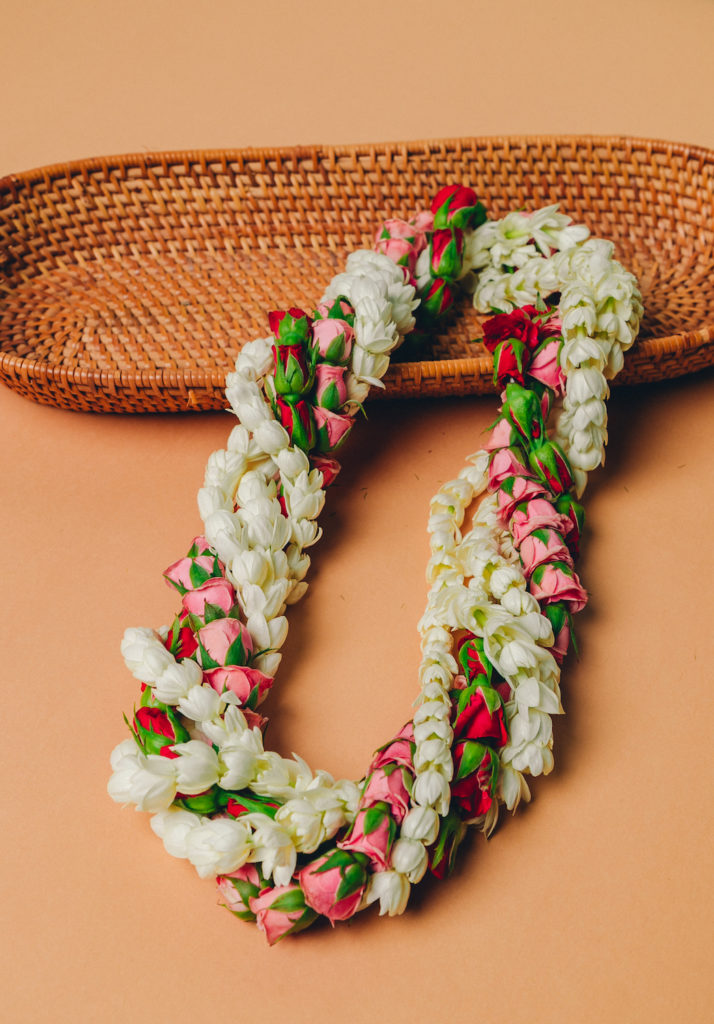
Today the Lei Day legacy continues with statewide festivities. Local schools put on programs featuring a Lei Day court procession in which students dress like royalty, cloaking themselves in different colors and types of lei to represent the eight main Hawaiian Islands. On O‘ahu, families gather for the annual Lei Day Celebration at Queen Kap‘iolani Park in Waikīkī—an elaborate affair that honors the skill and artistry of lei-making through local music and hula performances, lei-making demonstrations, and the crowning of a Lei Day queen. Year after year, Lei Day unites people of all ages and backgrounds to celebrate this Hawaiian tradition and revel in the shared blessings of friendship, goodwill, and aloha.
Another cheerful ritual born of Hawai‘i’s history is Aloha Friday, observed through the wearing of lightweight, collared aloha shirts featuring island-centric prints ranging from traditional (quilt, floral, traditional Hawaiian kapa) to bold and audacious (palm trees, sailboats, fish, surfboards). Originally, Aloha Friday gave buttoned-up businessmen permission to cut loose by donning the more relaxed aloha shirts one day a week in celebration of the week’s end. Thanks to Aloha Friday’s influence, aloha-print shirts, dresses, pants, and skirts have become the workwear standard every day of the week in many island offices.
Who created the first aloha shirt is a mystery, but one story credits Waikīkī merchant Ellery Chun, who began selling shirts cut from Japanese yukata cloth, often with Hawaiian and tropical patterns, as a strategy to save his family store in the wake of the Great Depression. In 1936, Chun re-branded his new line of garments as “aloha shirts” and trademarked the term. Decades later, textile manufacturer Alfred Sheehan enlisted artists to craft patterns inspired by Polynesian and Asian cultures, then mass-produced more refined aloha shirt designs under his factory roof. The style was catapulted into mainstream culture after Elvis Presley sported Sheehan’s red flower-print aloha shirt for his iconic 1961 Blue Hawaii album cover.
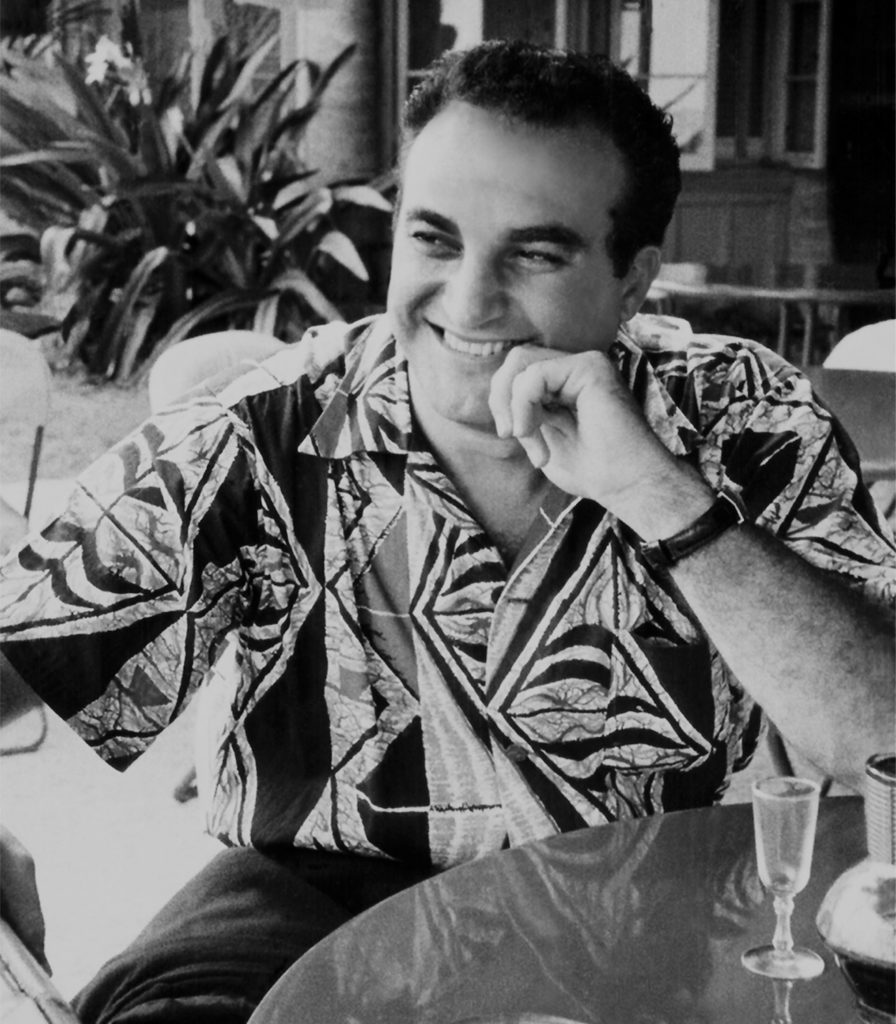
ALFRED SHAHEEN, A TEXTILE MANUFACTURER AND GARMENT INDUSTRY PIONEER KNOWN FOR POPULARIZING THE ALOHA SHIRT, WEARS A SAMOAN TAPA-PRINT SHIRT IN 1957.
In 1962, Hawaii Fashion Guild devised a plan to make aloha shirts popular with downtown businessmen in a marketing campaign called “Operation Liberation.” After gifting aloha shirts to members of the Hawai‘i Senate, Hawaii Fashion Guild president Howard Hope (founder of the Sun Fashions Hawaii label) and vice president Mort Feldman (founder of the Tori Richard label) lobbied the state legislature to designate every Friday between Memorial Day and Labor Day as “Aloha Friday.” Shortly after, the Senate passed a resolution permitting aloha shirts to be worn throughout the summer, starting on Lei Day, as a way to drum up community support of the local garment industry.
Dale Hope, aloha shirt historian and author of The Aloha Shirt: Spirit of the Islands, says it took several years to get the business community to adopt the new style of dress. “Men appreciated the more relaxed and comfortable aloha shirts and eventually were able to wear them more often, especially when smaller, conservative prints became available,” Hope says. After Aloha Friday was formally recognized by the State of Hawai‘i as a weekly tradition in 1966, influential businessmen began wearing the shirts year-round on Fridays. Once the style was adopted by conservative local bankers and attorneys, others followed suit.
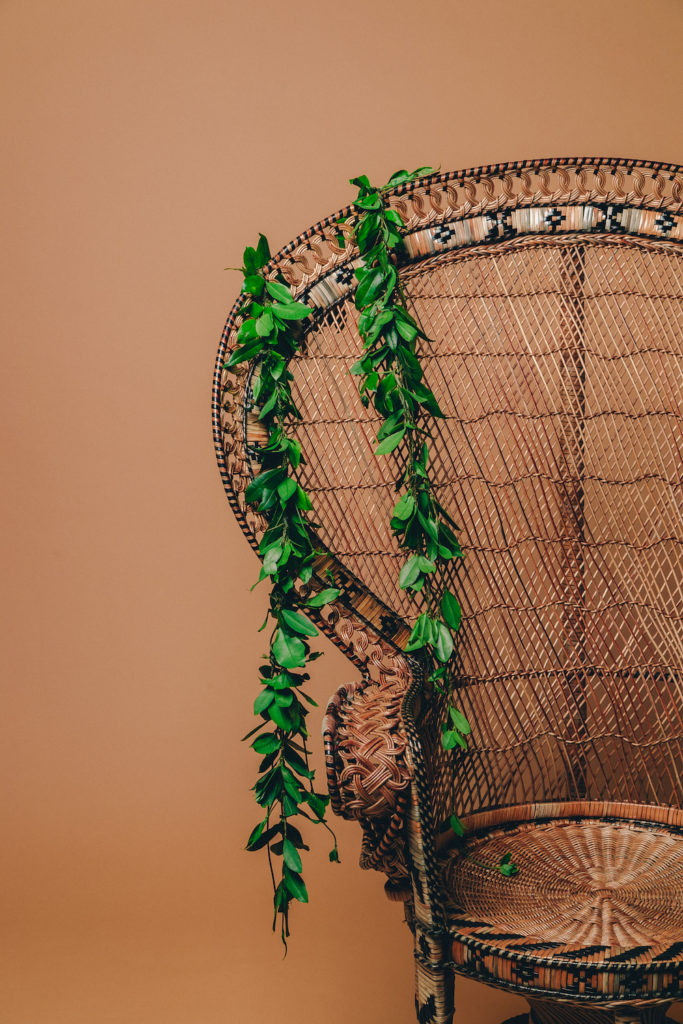
“It’s Aloha Friday, no work ‘til Monday. The cousins all here, drinking up my beer, got keiki running everywhere.”
—“Aloha Friday,” 1982, written by Kimo Kahoano & Paul Natto
Today Aloha Friday is as much a part of Hawai‘i’s local culture as rainbows, shave ice, and flower lei. Anyone decked out in aloha wear on Fridays—or any day of the week—serves as a reminder to relax and enjoy island life to the fullest.
Get in the Lei Day spirit with the help of master lei-maker Meleana Estes, who offers free lei-making workshops using native and temperate Hawaiian flora every first Sunday of the month in Queen’s Court on level one of International Market Place from 12 p.m. to 2 p.m.








